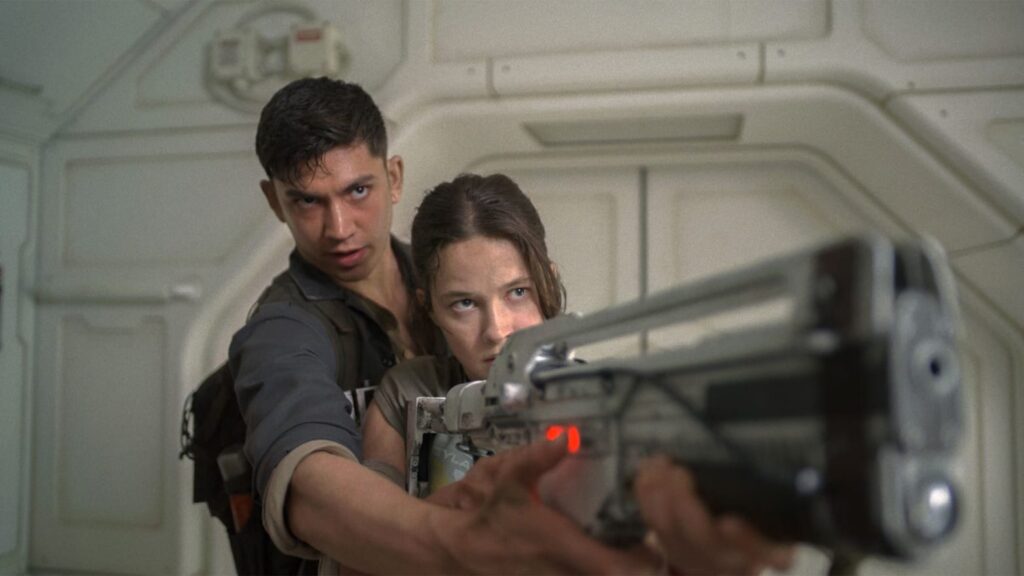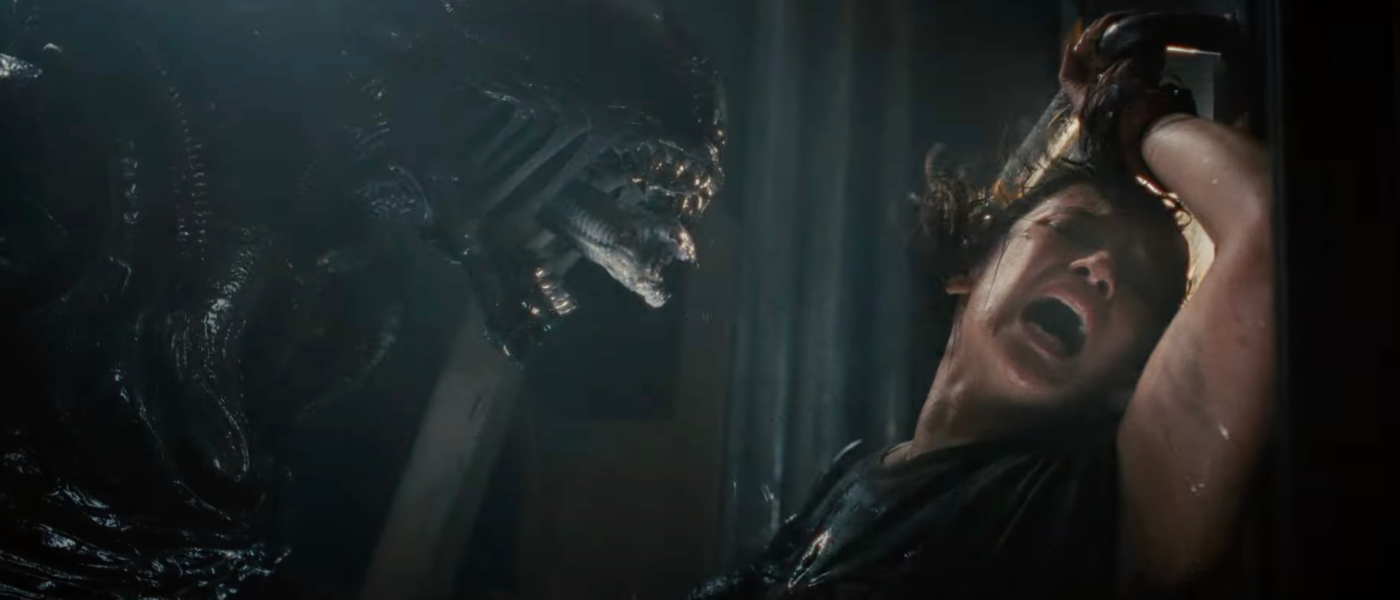In space no one can hear you yawn

Directed by Fede Álvarez
Starring Cailee Spaeny, David Jonsson, Isabela Merced
Released August 16th, 2024
Rated R
Originally planned for release on the streaming service Hulu, Alien: Romulus is instead being unleashed on theatrical screens, complete with a special edition popcorn bucket. I did not purchase one of these buckets, but I did see the film in IMAX, where the sound was so loud it shook my otherwise comfortable faux-leather seat. Set between 1979’s Alien and 1986’s Aliens, this latest film in the popular science fiction horror franchise concerns young people working on a mining planet who hate their station in life and are desperate to leave their world for a better one in a galaxy far, far away. One of these young people, the excellently named Rain Carradine (Cailee Spaeny) lives with her brother Andy (David Jonsson), who is an android “synthetic” programmed by her father (complete with dad jokes) to keep her company. An orphan, Rain considers him her only family.
After some brief peer pressure from her friends Tyler (Archie Renaux), Bjorn (Spike Fearn), and Kay (Isabela Merced), Rain agrees to a plan in which they would plunder an orbiting derelict space station for supplies, including cryogenic chambers that would assist her and her pals in traveling the long light years between planets. This turns out to be a horrible idea that leads to blood, screams, and death, as the reason the space station was abandoned becomes clear to these young people that soon find themselves running from strange, vicious creatures.

Cailee Spaeny was impressive in Alex Garland’s Civil War, and here she acquits herself well as the latest final girl in a series that has long had strong female leads (including Winona Ryder, Katherine Waterston, and of course, Sigourney Weaver). She’s outshined by her co-star David Jonsson, who plays Andy as a sad sack until he receives a programming upgrade that turns him into an agent of the powerful Weyland-Yutani corporation. This leads to the most interesting portions of the movie, as the story follows up on some narrative threads from prequels Prometheus and Alien: Covenant questioning how human beings interact with artificial intelligence and how much trust and faith we give to our created constructs. Unfortunately, Alien: Romulus quickly abandons these questions and is content to rely on all of the attacking monsters.
Talented genre filmmaker Fede Álvarez (Don’t Breathe, Evil Dead) doesn’t seem to have a clear idea of how best to show these monsters. He mostly shoots them close up, the creature’s teeth bared, their mouths dripping acidic blood. Álvarez seems more infatuated with the nymph stage of the xenomorphs, as there is a lot of face hugger action to be had. Some of the action sequences seem to be inspired by first-person-shooter video games, and some of the sets and art direction seems to be inspired by the wonderful, involving, and quite frightening video game Alien: Isolation. Still, the action sequences do not compare to James Cameron’s work on Aliens, the scares are nonexistent compared to Ridley Scott’s original Alien film, and the ending features an idea that was handled much more effectively in Jean-Pierre Jeunet’s underrated Alien: Resurrection.

The films in this series have classically done a great job of bringing on new ideas with each new director, but for the first time we have an entry that just references what has come before. The lazy script (by Rodo Sayagues and director Álvarez) is a hamster wheel of monotony. Perhaps the most egregious moment in Alien: Romulus comes as Andy the android says an iconic line of dialogue that another character in this series made famous. Continuity-wise, this other character would say the line some thirty years later, so it makes zero sense for the android to say the exact same words other than to make the audience say, “I understood that reference!”
This may be considered a spoiler, but I feel the need to bring up the most disturbing element of Alien: Romulus. It’s not a monster, but something more insidious. The late actor Ian Holm’s face is superimposed upon actor Daniel Betts’ body for what amounts to an extended cameo in the film. We’ve seen this before, with Peter Cushing and Carrie Fisher in Rogue One: A Star Wars Story, and with Christopher Reeve in The Flash. While filmmakers hope that such advancements in special effects can work to serve the story being told, some of the time such things can feel forced and insensitive. I understand that this was done with permission from the estate of Mr. Holm, but using modern computer technology to resurrect the dead is quite ironic for a series of films that warns against unethical artificial practices.


